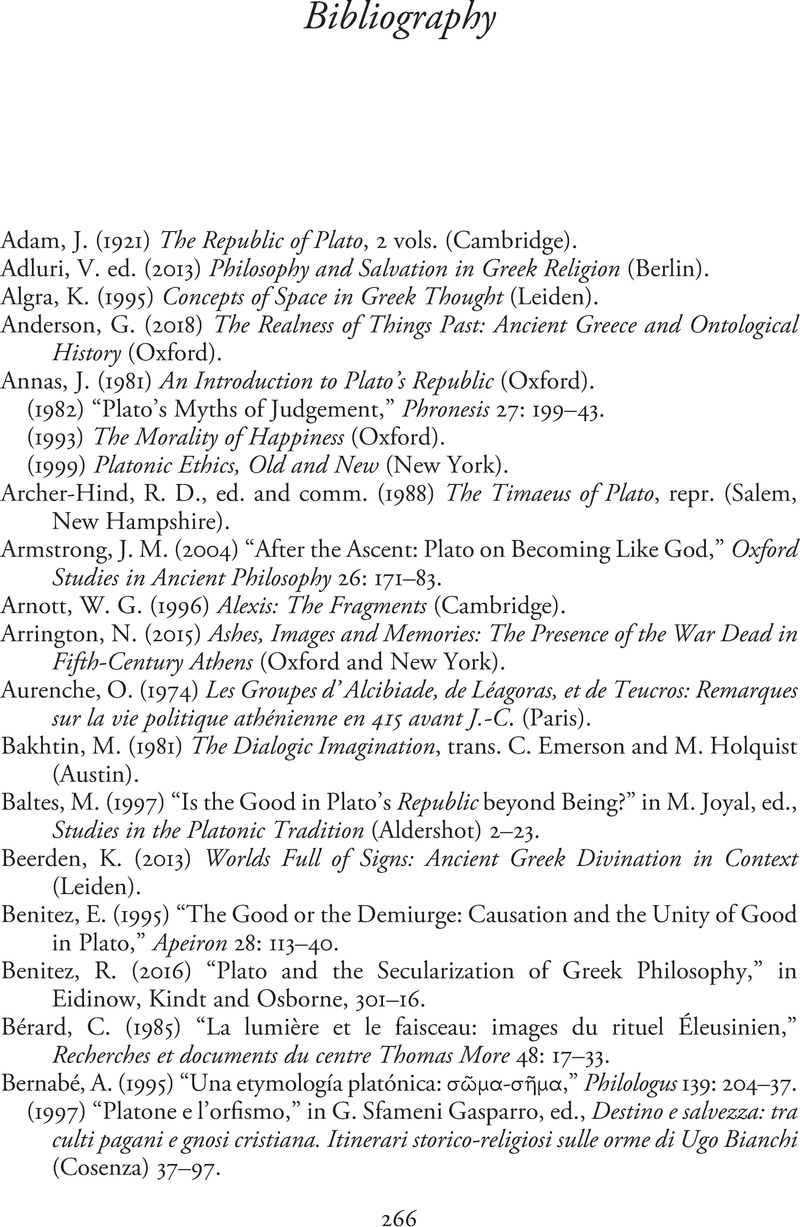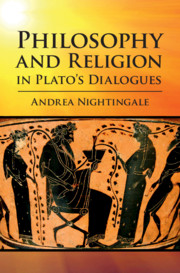Book contents
- Philosophy and Religion in Plato’s Dialogues
- Philosophy and Religion in Plato’s Dialogues
- Copyright page
- Dedication
- Contents
- Figures
- Acknowledgements
- Introduction
- Chapter 1 The Forms, the Good, and the Divine
- Chapter 2 Eternal Longings
- Chapter 3 Dialogue of Self and Soul
- Chapter 4 Wings of Desire
- Chapter 5 The Gods Made Visible
- Conclusion
- Bibliography
- Index
- References
Bibliography
Published online by Cambridge University Press: 15 April 2021
- Philosophy and Religion in Plato’s Dialogues
- Philosophy and Religion in Plato’s Dialogues
- Copyright page
- Dedication
- Contents
- Figures
- Acknowledgements
- Introduction
- Chapter 1 The Forms, the Good, and the Divine
- Chapter 2 Eternal Longings
- Chapter 3 Dialogue of Self and Soul
- Chapter 4 Wings of Desire
- Chapter 5 The Gods Made Visible
- Conclusion
- Bibliography
- Index
- References
Summary

- Type
- Chapter
- Information
- Philosophy and Religion in Plato's Dialogues , pp. 266 - 291Publisher: Cambridge University PressPrint publication year: 2021



